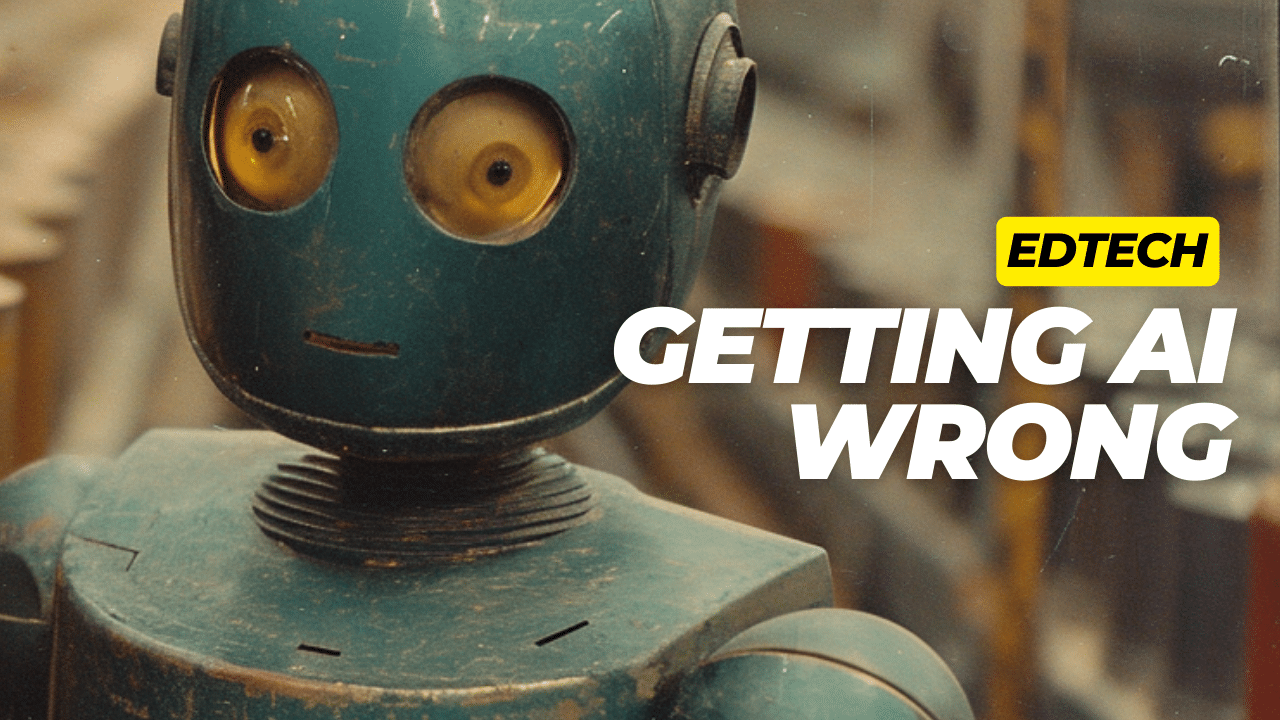
Many grand plans are currently being touted around artificial intelligence, especially its implications for education. Trainings are offered, advice given, certificates distributed, and new curriculums are being developed. However, is it just about adding AI topics to our syllabi as a community or something more? Do we need a grounding and fundamental shift in how educators perceive and utilize AI in real-time right now, or do we risk creating massive fractures across our educational communities? In my reflections, I seem to return to the concept of mindset repeatedly.
As we have previously seen, change is tough, with the rapid loss of interest in the Metaverse and also how quickly we reverted to “chalk and talk” methods and exam-based curricula like an unbreakable magnetic force after some initial interest in differentiated methods over the pandemic.
As much as many predict that AI will be far more resilient than the Metaverse, right now, businesses and entrepreneurs are conquering incredible feats with app design and innovations that lower pain points in many areas of life; one only has to look at the Mid-Journey V.6 release to see the incredible progress over the past eighteen months in this technology. Yet, concrete harmony and application within education seem confusing. Do we need to be more honest and admit, for now, chaos will reign? Do we need to be braver and more concise in defining where artificial intelligence fits within classic curriculum models, which most schools still follow and will continue to do so?
I am not an AI expert, but I am a creator of school curriculum and strategy, and for now, there is a lot of noise but limited help not just in an on-the-ground application but also sifting through what Andre Spicer, Dean at Bayes Business School, calls “botshit.” Classified as “generated content that is not grounded in truth (i.e., hallucinations) and is then uncritically used by a human for communication and decision-making tasks.”
While we’re obsessing over AI, we also might have taken our eye off the ball with some recent incredible progress in other domains, such as recently in both robotics and engine design; for example, Toyota’s Revolutionary Water-Powered Engine authors have claimed will change the projection of the whole EV industry or the release of Tesla’s Optimus Gen-2.

Optimus Gen-2
I get the buzz on AI. However, much more clarity and anchoring is needed on where it fits into the broader curriculum models for educators to adopt this technology to the levels many writers want.
Is the grounded future:
- An AI class, like history or math?
- Is it weaved into existing curricula like computer science as a module?
- Or, like School Core values, does it reside across the holistic school model (a lot harder to do)?
This shift demands educators not just to understand AI but also to embrace its potential to transform learning and see a clear pathway where this exists within the curriculum. Integrating AI into current subjects offers practicality and relevance, making AI an integral part of the educational fabric rather than a vague concept that gets more distant as the grade year progresses for the learners as they propel towards the exams after some cool orientation at the front end of the term, or in the early middle years programs.
What will be large-scale enough for most? Do current curricular models in schools fully support AI – if we are truthful, we know most don’t, no matter how enthusiastic your “AI lead” is.
The solution most research we have conducted in the THINK Learning Studio points towards many educators wanting an isolated AI frontier class or lab. However, many others want AI to be embedded meaningfully within the curriculum. This is why I believe in the power of Project-Based Learning and why we created our movement a decade ago to pivot fast to breaking technology within the Process Portfolio approach (“prop”). AI can exist anywhere and everywhere within the ‘PROP”, whether it be teacher-led modules or student-led personal projects.
During THINK Learning Studio research and interviews, the more pessimistic educators are waiting for new modules to be added to existing subjects in the 2025-26 school year, not a cataclysmic curriculum overhaul. That seems to be many’s reality. So,, what does this mean for the future of AI? Is this a model protagonists are willing to accept? Or is this change simply not taking the opportunity in front of us?
Any significant step will involve reimagining AND redesigning how artificial intelligence lives and breathes within our curriculums; using an AI tool or chatbot to enhance learning experiences is a credible step by an educator. However, it still divides opinion, and rightly so; the OECD-ai policy division just authored a piece on how AI chatbots ‘may soon be more intelligent than us‘, citing the renowned Geoffrey Hinton.
For instance, AI-driven data analysis in science classes or AI-created simulations in history lessons can offer students a more engaging and comprehensive understanding of the subjects; in seconds, a learner could interview Karl Marx, Genghis Khan, or Napoleon, but if we circle back to the words of Andre Spicer, is this “botshit” or valuable insight, or something as yet undefined in between?
We know from history that if new tech or topics potentially torpedo the existing syllabus or create an environment where educators are falling behind on their mandated lesson plans, falling foul of heads of department and faculty – it just won’t get done or be viably integrated. Thus, we exist in a critical moment as education intersects with artificial intelligence.
This strategy could involve a community-driven roadmap for educators, focusing on an achievable integration of AI within current teaching methodologies and orientation courses on AI for teacher training courses. Professional development and training in AI should be prioritized for existing educators and those entering the profession to equip our teams with the necessary skills and a grounding within real-time applications today; otherwise, as stated, we risk just creating noise.
Any approach must aim for AI to coexist seamlessly with existing curricula and be deliberately integrated within its terms, or we must accept and manage its somewhat ambiguous and slightly chaotic nature within our educational systems. This involves overhauling current systems to make AI relevant or preparing students for a future where AI is ubiquitous.










